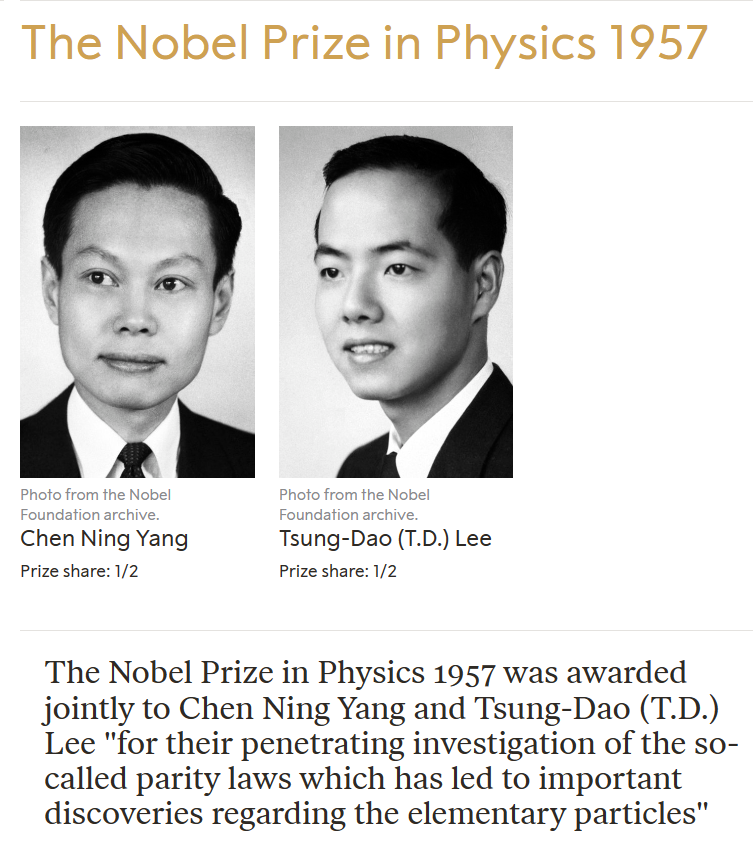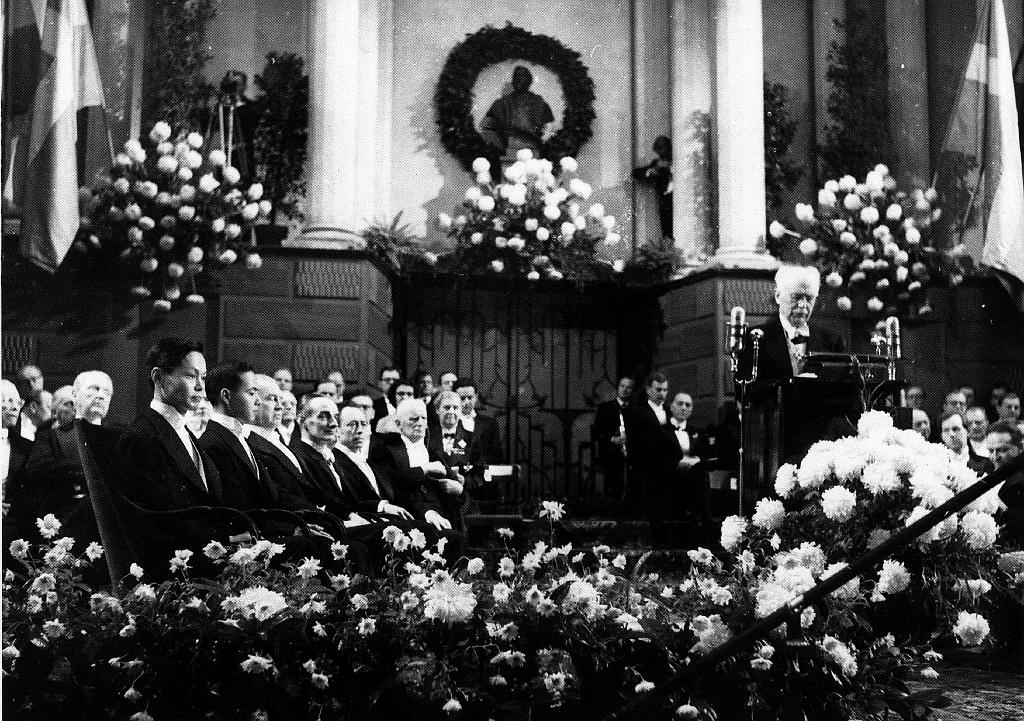"Wu’s experimental discovery in 1957 confirmed a theory by Chen Ning Yang and Tsung-Dao Lee, who were then awarded the Nobel Prize in physics later that year, even mentioning Wu in their acceptance speech...Although she designed and undertook the experiment that confirmed the theory for which the Nobel was awarded, Wu was not included in the prize." (American Institute of Physics)

(Nobel Foundation Archive)
Some physicists argued that Wu should have been included in the prize for being the one to provide experimental evidence for Yang and Lee's theory of parity violation and believed that she was excluded from this award simply because she was a woman.

